Silverhaze
Member
exelent info....gonna do this for sure...
sannie said:Super thread
Here a bonsai mamma from sannie;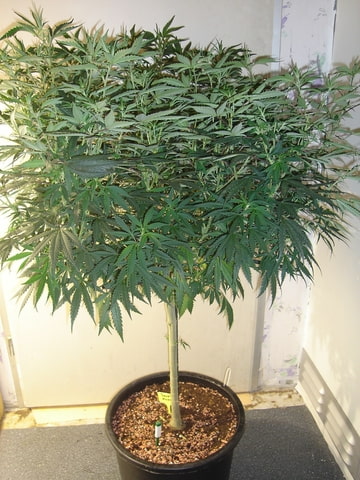
greetz sannie
 Damn, nice tree. Could pass as an indoor ficus from a distance.
Damn, nice tree. Could pass as an indoor ficus from a distance.JJonahJameson said:Growing Bonsai Mums
Tip-toe through the twisted gardens of our resident admins JJonahJameson and Ain Sof.
In an ancient Japanese scroll written in Japan around the Kamakura period, it is translated to say : "To appreciate and find pleasure in curiously curved potted trees is to love deformity".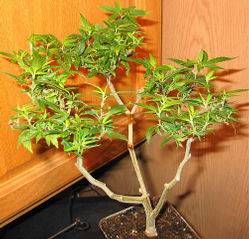
What is bonsai? Where does it come from?
Bonsai means: "Plant in a tray".1
Bonsai is the art or process of making small trees. As a practice it came from China over a thousand years ago. The art found its way into Japanese hands between 1185-1333 and has flourished from there to monks, Japanese aristocracy, then to the general public developing into a fine art and important cultural and philosophical endeavor.
Once Japan opened its doors of isolation to the rest of the world in the 19th century, people began to take notice of this amazing and age-old art form.
"…exhibitions in London, Vienna and Paris in the latter part of the century - especially the Paris World Exhibition in 1900 opened the world's eyes up to bonsai." 2
Why bonsai for marijuana gardening?
Because not only is it aesthetically pleasing, it's extremely functional.
Bonsai-techniques will keep your plant small, yet productive.
From a bonsai mum point of view, this technique comes in handy if you want to keep a small mum but also need to be able to take many cuttings at once.
Bonsai-techniques will keep your plant "stealthy"
A proper bonsai will only take up about a foot in height, perhaps a foot in span. Compared to larger more unwieldy mothers for cuts and strain selection, this is an option that starts to look good to the canna-farmer who has been forced to maintain smaller and stealthier gardens.
The canopy over time will produce many smaller leaves using many more small branches. The finite resources of light and space will force the plant to produce small in size but maintain productivity in volume of branches and cuttings.
What is the technique? What basic rules do I need to follow?
Bonsai farming requires less light, less feeding and less space. Pruning both above the soil-line (grow tips) and below (root trimming) will be necessary as maintenance. Familiarity with training/bending methods is useful too, for shaping the canopy, though it isn't absolutely necessary for all strains.
Do I create a bonsai Cannabis plant in soil/soil-less medium or can I do it in a hydroponic/aeroponic medium?
For the purposes of this FAQ we recommend soil or soil-less mix like Promix, Coco, etc. The reason is we're not looking for heavy, quick growth - we're looking to slow down the process of growth over time. Hydroponic and aeroponic solutions may be too productive for this method, requiring a lot more maintenance than a soil or soil-less mix would; it would require much more maintenance.
You can always speed up production of cuttings by increasing light levels and feed in the soil plants.
Does strain play a role on how you train and prune?
Somewhat, yes. Certain strains are easier and/or look better but we haven't come across one that you can't bonsai yet.
The trickiest plants to bonsai are strains that like to grow single cola and don't branch out much. Even those with regular topping will put out side shoots, they just tend to take longer to do so.
Autoflowering strains:
Auto-flowering strains are somewhat trickier to bonsai. Greater care is needed in pruning the top and roots. Waiting until the roots fill the pot and the plant tells you it's roots need a trim. You should do it preemptively. I've also found that a more vigorous pruning of the top is needed.
For example: I have the sweet pink grapefruit clone (the one that went into making sweet tooth). Now it tends to auto-flower but it's possible to keep her in a full vegetative state. But you have to be vigilant, the second she stresses out a little she starts spouting pre-flowers galore. So by cutting her back and making sure she doesn't get root bound is the key to keeping her in vegetation-mode.
Stretchier strains:
As for plants that grow stretchy both tying down and topping is needed. In the beginning you top more forcing the plant to put out more side branches (do this a few times) then tying down to open up the plant more seems to work well.
How do I start a bonsai plant? Can I do it from seed?
Consensus leans toward using a rooted cutting over a seed plant for bonsai, though it is possible to do so from seed.
What do I need to create a bonsai marijuana plant?
For the creation of the bonsai:
Square pots: 4” to 6” and soil/soil-less mix/coco medium
Pruning scissors
Clips/string for tying down (optional)
How do I make a cutting or seed plant a bonsai?
Ok, let’s get down to it. As far as creating a bonsai plant, you have many options like pinching, cutting, bending, tying and probably a few other ways not mentioned.
There are two methods to approach the start of a bonsai and it is largely personal preference. The first method shown, the plant used will be bent, tying the top down to stimulate the lower emergent branches which will start growing into a multi-top canopy that will make the frame of our bonsai. The second method will go straight for topping the plant once it’s heartily growing, leaving 4 to 6 emergent branches (2-3 nodes).
Either method you use, more light and feed are welcome at this point to stimulate rapid growth of the branches that will make up the skeleton of your bonsai plant. It isn’t necessary however. Each method will require topping the new shoots as the canopy and branches develop down the line, the only difference at this point is where you begin.
Method 1: Tying/Bending
This method takes a rooted clone that has been allowed to grow untouched and is being bent to stimulate the under-branches to begin growing.
Wire 1 is placed around the stem to keep it sturdier and so that it will curve where it is directed.
Wire 2 is the first shaping and the top will be bent more drastically later. For now it will start forcing the top to grow in the direction you want. This will also make the lower shoots spring up straight re-orientating themselves towards the light source.
From this point, tops will be clipped as needed and any branches not desired will be removed. What was the top is now a side branch and the canopy is being formed and light can get to all the smaller branches.
Here's some progress a few weeks later.
This method is being done with lighter feeding and light and you can see how it progresses slowly, but diligently. The center is opened, branching is directed to the sides.
This plant has been repotted into a slightly larger square container.
The same mother two months into the process. We're almost at the point where the plant will hold its shape and the wires can be removed, maybe another month. The trunk is thicker, the branching is thicker and branches for cuttings are more plentiful.
Another example of bending using a Chemo Cross - please be warned, this strain is quite malleable. Most strains will not be as flexible as this so bending should be done in less extreme steps.
Method 2: Topping
Instead of tying to open up the lower branches, we choose to cut the growth above the 2nd or 3rd node. Taking a bigger plant, and chopping it down.
Using an untopped clone that has been vegged out for close to a month, the first cut is made on the main stem at the point where four developing branches are left below.
We're left with a well-rooted plant that is now forced to grow from its four remaining branches. As the branches grow it will produce a candelabra pattern which leaves the center open with diligent pruning.
A few weeks later growth has taken off. This is a particularly branchy strain which will require frequent pruning and directing. The lowest branches you can see can and will be stripped from the trunk, leaving the higher branches as our emerging canopy.
Both methods presented - tying or clipping - will leave you with the basic shape and start of a bonsai-style Marijuana mother which can be pruned and shaped pretty much any way you'd like. Your imagination is the limit here. The essential aim is to establish a limited, intentionally directed pattern of branching which will grow over time, thicken and support a tight canopy from which you can draw your cutting supply.
How do I maintain these mothers?
As the canopy grows, you can let the tips grow and take them as cuttings for flowering.
Pictured here is a bonsai-in-training that is in the middle of being trimmed back. You'll notice a few tops that will be taken shortly as cuttings to be cloned and flowered.
Through the next few months as the plant takes on the classical look of a bonsai, you continue to prune the new tips as they come up, and the emergent branches below the cuts will grow to continue forming the canopy which will become quite bushy.
You can leave the tops to grow for a few days or weeks for cuttings, or you can pinch out new tips as they come in. The more tops you create, the smaller the leaves will become which is where stealth comes in.
How and why do I root trim?
Root trimming is necessary because you keep the plant in a small pot for its entire lifespan. In order to keep it healthy, this is a necessary bit of maintenance. In these plant examples shown above, 5" pots will be the final home for our mothers. In order to stave off rootbound plants and the downhill slide of a rootbound specimen, we must root trim periodically.
Making sure the soil is moist and the roots have grown extensively into the medium (both will help keep the rootball from falling apart which will cause death), gently pull the plant and rootball from the container.
Using a serrated bread knife, trim off the corners of the rootball and discard the slices.
Pack the rootball in with fresh soil, water and feed lightly and it should resume growth in a few days.
How often do I root trim?
With some exception, you trim the roots when your plant shows the classic signs of being rootbound. You can also (gently!) lift the rootball out and check it periodically. A well-rooted plant will give you a window of time before it begins to show signs of yellowing, starvation and unhealthy growing patterns.
Trimming depends on pot size, but it's usually within the first two months of your forming it, then every few months afterward. The pace of root trimming largely depends on how much light and feed you give the plant in correlation to the size of the pot you're using.
Bonsai, meaning plant in a pot, is just that. The rest is for the grower to explore the ways of doing it.
Remember to back up your work; bonsai do fail from too much tinkering, or removing too much from the top or bottom at one time as well as a potential host of other problems like infestation or disease.
The classical bonsai shaped plant takes a while to accomplish, and the plant itself can be maintained by the watchfull gardener for years. But should problems arise, it can just as easily be replaced using another clone. The benefits of this style of grow are that as long as you can clone, you can tinker and perpetuate your stock and keep it small in the process.
The purpose is essentially maintaining miniature mothers or fathers for a collection, to be cloned and flowered later on down the line for as long as you choose to keep it. The rest is basic methedology and an exercise in loving patience. Enjoy and pass on the benefits of bonsai-style cannabis plants to others as a tool for a plan as simple as a connoisseur's garden or for complex endeavors such as a breeding program.
Happy growing!
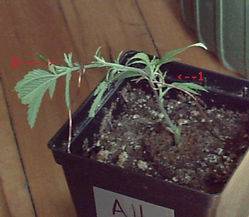
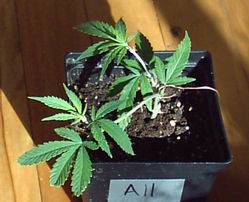

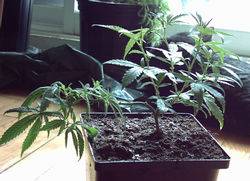
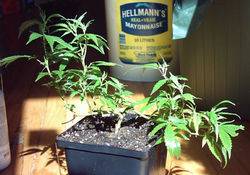
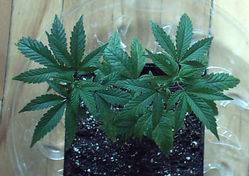
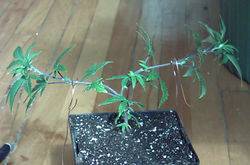

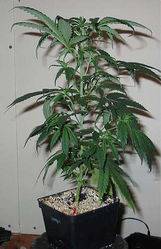
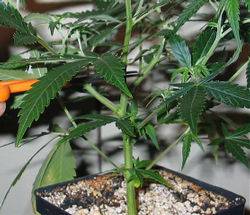
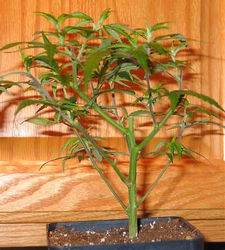
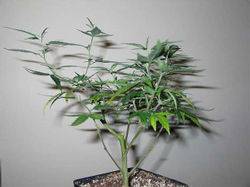
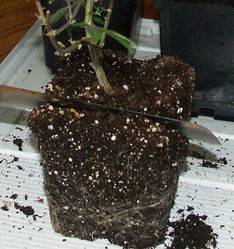
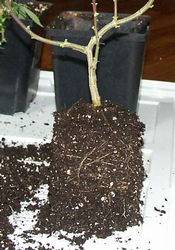
 Hit me up once you get 50 posts, we can talk all things bonsai!
Hit me up once you get 50 posts, we can talk all things bonsai!